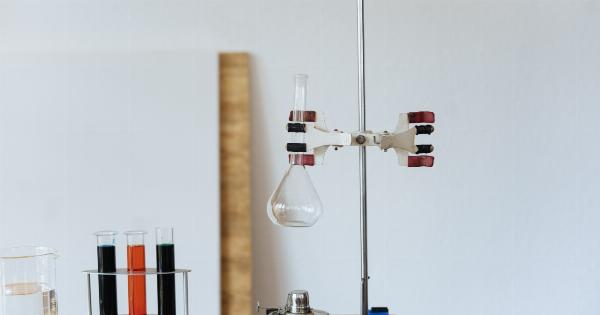Testicular swelling, also known as testicular edema, is a condition characterized by an abnormal accumulation of fluid in the testicles. This can result in discomfort, pain, and an enlarged appearance of the affected area.
While there can be several causes of testicular swelling, one possible explanation is fluid retention.
Understanding Fluid Retention
Fluid retention, medically referred to as edema, occurs when excess fluid is trapped in the body’s tissues. It can affect different parts of the body, including the hands, feet, ankles, and even the testicles.
Fluid retention can be caused by various factors, such as hormonal imbalances, certain medications, kidney or liver problems, heart failure, or even temperature changes.
The Relationship Between Fluid Retention and Testicular Swelling
When fluid builds up in the testicles, it can lead to testicular swelling. This can occur due to various reasons:.
1. Infection or Inflammation
Infections or inflammation in the testicles can cause fluid retention, leading to swelling. Conditions like epididymitis, orchitis, or prostatitis can result in the accumulation of fluid within the testicles.
2. Trauma or Injury
Injuries to the testicles, such as a direct blow or trauma, can trigger the body’s inflammatory response. This inflammation may cause fluid to accumulate in the affected area, resulting in swelling.
3. Testicular Torsion
Testicular torsion occurs when the spermatic cord twists, cutting off blood flow to the testicles. This condition requires immediate medical attention, as the loss of blood flow can cause fluid to accumulate and lead to severe testicular swelling.
4. Varicocele
A varicocele is a condition characterized by the enlargement of veins within the scrotum. When the veins become enlarged, the blood flow can be impaired, leading to fluid accumulation and subsequent testicular swelling.
5. Congestive Heart Failure
Congestive heart failure, a condition where the heart fails to pump blood effectively, can cause fluid retention throughout the body. This fluid can accumulate within the testicles, causing them to swell.
Diagnosing Testicular Swelling Caused by Fluid Retention
When experiencing testicular swelling, it is crucial to seek medical advice for a proper diagnosis. A healthcare professional will typically perform a physical examination, ask about symptoms, and may order additional tests, such as:.
1. Ultrasound
An ultrasound can help visualize the structure of the testicles and determine if there is any fluid accumulation or other abnormalities present.
2. Blood Tests
Blood tests can provide valuable information about hormonal imbalances, kidney or liver function, and the presence of any infections or inflammation that may be causing the testicular swelling.
3. Urine Analysis
An analysis of the urine can help identify any potential urinary tract infections or other abnormalities that may be contributing to the testicular swelling.
Treatment Options
The treatment approach for testicular swelling caused by fluid retention depends on the underlying cause. Some possible treatment options include:.
1. Antibiotics
If an infection is causing the testicular swelling, antibiotics may be prescribed to eliminate the infection and reduce inflammation.
2. Pain Medication
Over-the-counter pain medications, such as ibuprofen or acetaminophen, may be recommended to manage any discomfort or pain associated with testicular swelling.
3. Surgical Intervention
In severe cases, surgical intervention may be necessary to address the underlying problem. For example, testicular torsion requires immediate surgery to untwist the spermatic cord and restore blood flow.
4. Lifestyle Changes
For testicular swelling caused by congestive heart failure or fluid retention related to certain medications, lifestyle changes may be necessary.
These changes might include dietary modifications (reducing salt intake) or adjusting medication regimens as prescribed by a healthcare professional.
Prevention and Outlook
Preventing testicular swelling caused by fluid retention largely depends on addressing the underlying condition.
Adhering to proper hygiene practices, wearing protective gear during physical activities, and seeking early treatment for infections or injuries can help minimize the risk. The outlook for testicular swelling caused by fluid retention is generally positive, especially when the underlying cause is promptly identified and effectively treated.

























